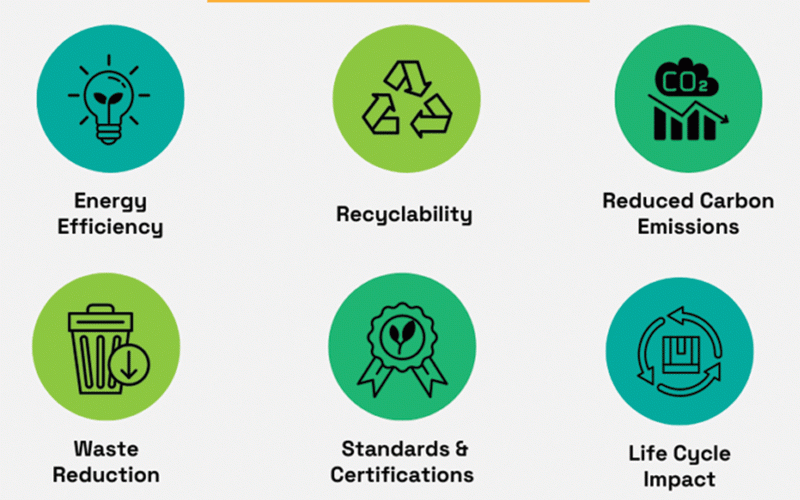
CYBER security threats are on the rise. Supply chain professionals paying attention to business news are fully aware that cyberattacks are everywhere.
Procurement is not spared. These risks are exposing critical supply chain vulnerabilities. The cyberattacks will continue to surface as organisations adopt technologies such as cloud computing, adoption of internet of things devises and the use of networked software solutions.
Such technologies will serve as vulnerable entry points for cyberattacks. Cyber threats in supply chain management can lurk behind every email, transaction, or virtual exchange. In today’s digital era, a single wrong click could spell disaster.
The frequency of cyberattacks is concerning, yet not entirely unexpected. Cyber security is not a question of if an incident will occur, but when. Supply chains will always remain potential playgrounds for hackers.
It is, therefore, important to do all things necessary to diminish the odds of security breaches emanating from cyberattacks.
Supply chains are home to a plethora of valuable information. The supply chain network is the bloodline of every business. Free-flowing information between supply chain partners will certainly make business relationships far easier, although it must always be remembered that it also poses critical security risks.
The growing acceptance of big data in procurement has amplified the importance of cyber security in the profession. The reality is that, with an increasingly connected world, organisational data across all industry verticals is at risk to cybercriminals.
Supply chains serve as the lifeline for global commerce, seamlessly connecting manufacturers, suppliers, distributors and retailers. Organisations are fully aware that if their vendors get hacked, here comes trouble.
- Social commentary: By Moses Mugugunyeki – Cyberbullying weighs more heavily on women, girls
- Ebenezer Distributors bring relief to farmers
- Social commentary: By Moses Mugugunyeki – Cyberbullying weighs more heavily on women, girls
- Ebenezer Distributors bring relief to farmers
Keep Reading
If their vendor’s vendor gets hacked, their troubles will multiply. The threat of cyberattacks has never been higher and the potential fallout has never been more dangerous than today.
Alarm bells are ringing non-stop and seemingly bulletproof companies are getting hacked daily.
The supply chain industry is a global ecosystem with tentacles into so many different industries around the world. As organisational threats are growing globally, so too do the cyber security threats. Organisations face repeated and unprecedented threats to their data.
The intent is almost always malicious. The intent could be information theft, it could be sabotage, it could be espionage and or it could be for financial gain. Yet despite the above dangers, the need for interconnectedness will always remain relevant in supply chain. Unfortunately, the space will also remain highly vulnerable. The procurement process flows can easily open the back door to cyber threats since such threats will always be lurking beneath the supply chain ecosystem.
It has been proven beyond reasonable doubt that as we move into the future, procurement will always remain riddled with cyber security minefields, which is the typical shadowy side of the profession.
This has put supply chains on the spotlight. It is, therefore, not surprising that the supply chain industry stands out as amongst the most vulnerable to the dangers of cyberattacks.
Procurement professionals must be at the forefront of safeguarding the integrity, authenticity and confidentiality of every business transaction in procurement.
Virtual solutions necessitate the regular interchange and use of valuable and confidential information, which is often targeted by cyber attackers. Poor cyber security protocols can lead to unauthorised access to sensitive information resulting in financial losses and reputational damage.
Cyber security breaches can damage an organisation’s reputation, erode trust and lead to customer churn after years of loyalty. Such breaches can also disrupt critical business operations, causing serious downtime, productivity losses and service disruptions.
It will certainly impact multiple interconnected entities, which may result in supply chain delays and compromised services.
The bulk of operational activities are now being conducted online, what with employees often working remotely, cyber security threats are an inevitable aspect of modern supply chain ecosystem.
Malicious actors continuously evolve their cyberattack methodologies, which implies that today’s effective security protection may be tomorrow’s vulnerability. Malware and ransomware relate to malicious software that is designed to gain unauthorised access or to damage a system.
It is possible for procurement personnel to download ransomware from a supplier’s infected invoice. Cyberattacks can also emanate from man-in-the-middle attacks where intruders may covertly intercept certain information like banking details leading to a possible interception of the funds.
There are also certain instances where supply chain professionals communicate over a popular social media platform, only to fall prey to a hidden cyberattack launched through the same platform.
Phishing schemes can easily trick supply chain professionals into receiving a perfectly timed genuine looking email emanating from seemingly a well-known supplier requesting payment details for a shipment, only to discover it was a fake email trying to redirect a payment.
Attackers can install malware on the organisation’s computers, servers, or any other devises using social engineering techniques to gain access through the back door. With the help of malware, an attacker can gain access to sensitive data, control the target system or disrupt operations.
Ransomware will have the capacity to lock a victim’s system or encrypts data, making it inaccessible. It will be followed by demands of a ransom and threats to destroy or keep data encrypted.
Credential thefts will involve illegitimately obtaining the username and password to gain unauthorised access to a system or data. Credentials are usernames, passwords and other secret codes used for authenticating and authorising a user to log in into a system.
Attackers leverage various techniques like phishing, brute-forcing, keylogging and more to steal victim’s credentials. Most commonly, vulnerabilities arise from outdated software components, misconfigurations and or human error.
The cyber risks are as diverse as they are impactful. Every missed opportunity to address these risks leaves the business vulnerable, creating a domino effect that can ripple through supply chain operations, finances and even the provision of public services.
The cyber risks will continue to lurk beneath the surface, accumulating overtime. Cyber security risks signs are subtle but telling and they often mark the first sign of trouble.
Keeping tabs on cyber security risks is not just a safeguard — it is a lifeline.
But the underlying lesson is universal, there is no one-size-fits-all solution. Supply chain professionals must be on high alert to implement robust bespoke cyber security protocols.
Conducting regular risk assessments of their suppliers and vendors is now important. These attacks can have far-reaching consequences, affecting not only the primary target but also its customers, partners and the broader supply chain network. Supply chain professionals must continuously assess and manage the security posture of their third-party vendors by establishing robust security protocols.
A single weak link, whether it is a vulnerable vendor system or unsecured communication channel can disrupt the entire supply chain ecosystem. By adopting proactive measures such as vendor risk assessments, encryption and zero-trust models, organisations can effectively mitigate supply chain vulnerabilities.
In organisations where a vendor’s cyber security is not even a consideration during the procurement process, such vulnerabilities are opportunities that are simply too juicy to pass up for hackers.
Supply chain professionals must, therefore, encourage a culture of scepticism during vendor onboarding and contract signing.
Without seemingly being too Machiavellian about it, intelligent people will always tell you that in times of peace, prepare for war. When engaging vendors, cyber security must be viewed as essential business hygiene, a point repeatedly emphasised by industry leaders.
Supply chain professionals must implement robust risk management frameworks by conducting vendor assessments and deploying advanced threat detection systems across the entire supply chain ecosystem.
Supply chain professionals must rely on a zero-trust architecture that verifies every user and device attempting to access the network. They must also implement multi-factor authentication for all supply chain systems.
Such protocols must be followed by least-privilege principles which ensure that vendors will be sparingly accorded access to confidential information.
Supply chain professionals must achieve vendor assurances through routine security audits.
Provisions of security audits should be stipulated within contracts often referred to as a right to audit clause and can serve as a way to gain independent assurances of the security posture of a supplier.
Another way to prevent supply chain cyber risks is to use multi-factor authentication. It adds another layer of security to protect data especially where there is a possibility of internal supply chain threats which are just as damaging.
It has been generally observed that phishing attacks often masquerade as trustworthy supply chain partners. They normally trick employees into giving away sensitive information.
Unsuspecting supply chain professional may be coaxed into sharing valuable confidential information without realising that they are communicating with an intruder. Cyberattacks are often exploiting such social vulnerabilities, proving that even the most trusted online spaces aren’t always safe.
Supply chain professionals may rely on login details that are predictable such as 1234. They will be inviting trouble all day long. In any cyber security strategy, humans are the weakest link.
Creating a culture of cyber security awareness fosters a sense of communal responsibility for the supply chain’s security protocols. Employees being the first line of defence must be well trained on the potential dangers of cyberattacks.
In conclusion, it is said that cyber security risks often feel like the proverbial pebble in the shoe — small but capable of causing significant discomfort.
Cyber security should always remain at front and centre of the modern supply chain thought processes.
In an increasingly inter-connected world, it has become a universal must-do. Understanding supply chain cyber security issues isn’t just a priority, it is now a necessity. It should put procurement professionals on high alert.
It will strengthen a company’s security posture in the supply chain ecosystem. The vast data resources that are infiltrated are extremely valuable resources, synonymous with strategic advantage. In the world of procurement, reputation is everything. Reputation is a business’ most fragile asset. It can be destroyed by cyber security in a flash.
Nyika is a supply chain practitioner based in Harare. — [email protected].











